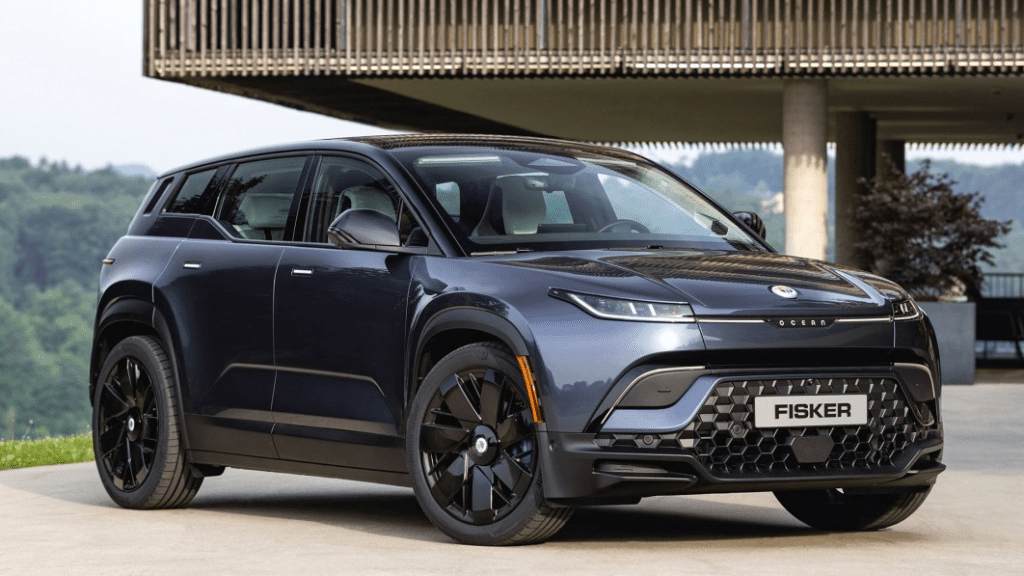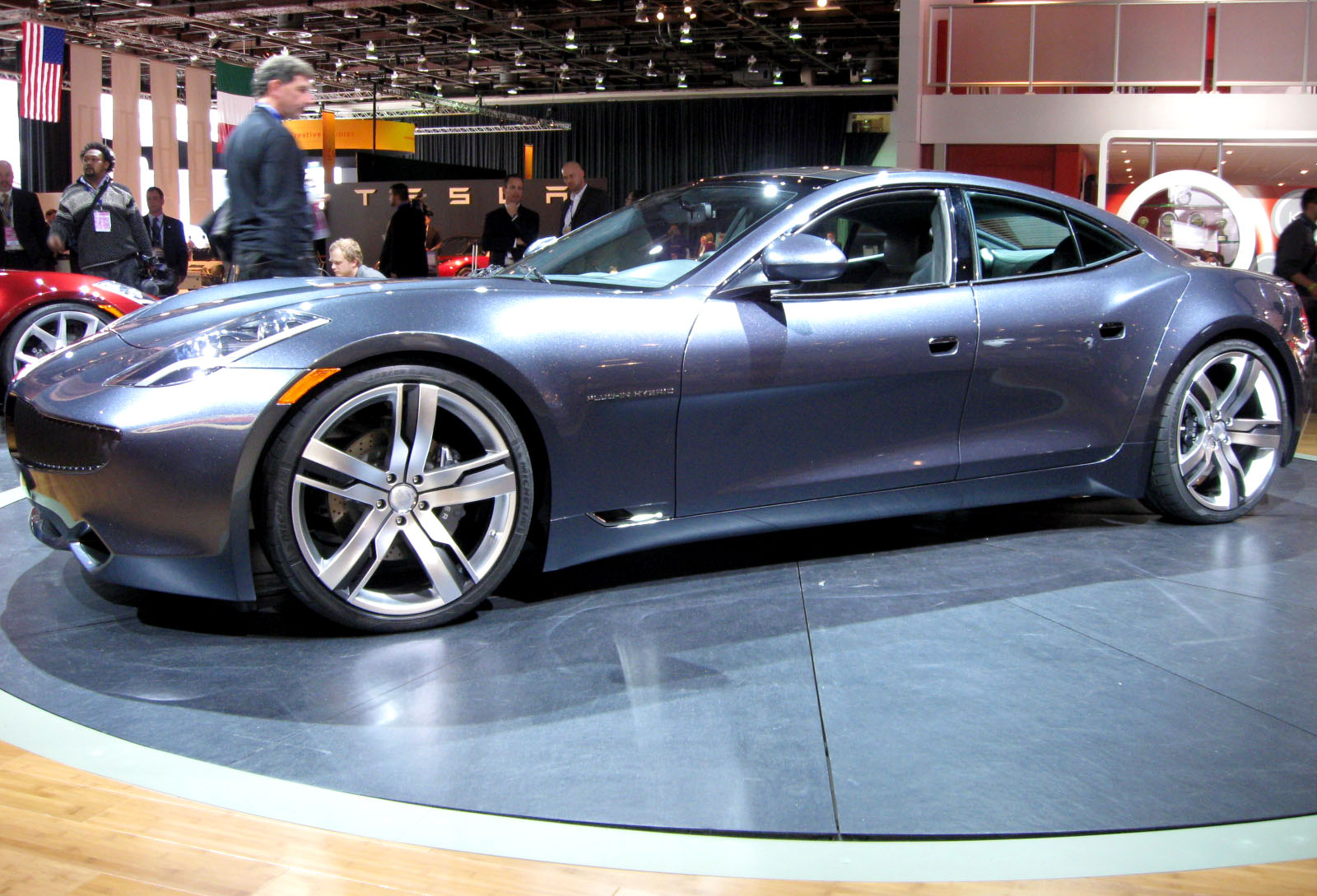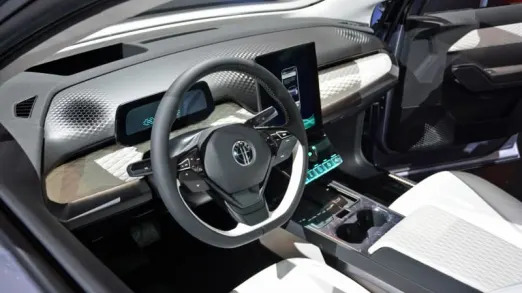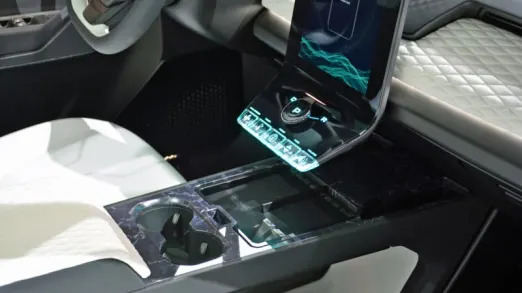Fisker Ocean electric SUV rife with serious problems, internal documents show

On a typically sunny day in Los Angeles last June, Henrik Fisker choked up as he handed over his company’s first all-electric SUVs in the United States. “I’m really kind of emotional about it, because we’ve been waiting two-and-a-half years for this, and everyone here has done a tremendous job,” the founder and CEO said.
The day had started on a celebratory note. Fisker, donning a graphic tee depicting the electric Ocean SUV, hugged and posed for photos with the company’s first customers — at one point even signing one of the vehicles.
What happened next was a harbinger for Fisker and what his eponymous company continues to grapple with: Shortly after Fisker board member Wendy Greuel took delivery, her Ocean SUV lost power on a public road, according to two employees familiar with the matter. The company has confirmed the incident occurred, and said the issue with her vehicle was fixed.
Two months later, Geeta Gupta Fisker — the company’s chief financial officer, chief operating officer and Henrik’s wife — took an Ocean out for a drive, only to have it suffer a similar fate, according to a cache of internal documents viewed by TechCrunch. Fisker also confirmed her vehicle lost power, blaming it on a compatibility issue with a special engineering data logger that is not in customer cars.

In the months since, Fisker Ocean SUV customers have reported more than 100 separate loss-of-power incidents, the internal documents show. The company told TechCrunch it believes these problems are rare, and that it has resolved “almost all the issues” with software updates.
Problems with the Ocean SUV, however, are not limited to the vehicle suddenly losing power, a review of nearly 200 documents shows. Customers have also reported sudden loss of braking power, problematic key fobs causing them to get locked inside or outside of the vehicle, seat sensors that don’t detect the driver’s presence and the SUV’s front hood suddenly flying up at high speeds.
The National Highway Traffic Safety Administration is currently investigating the braking problems, which Fisker claims it resolved. The company told TechCrunch that fixes for the other problems have either been implemented, or are coming in a “Version 2.0” software update scheduled to be released next week.
Fisker launched the Ocean later than expected due in part to challenges with the SUV’s software; the company spent much of last year making up for lost ground. As incidents, complaints and even customer lawsuits about quality issues stacked up, Fisker pressed forward and ended up delivering around 4,900 Oceans in 2023. The result is a company burning through an average of around $100 million a quarter as it strives to sell more Ocean SUVs to customers — and, now, to dealerships — while shouldering the costly exercise of addressing myriad problems that could make sales more difficult.

Image credits: Kristen Hall-Geisler/TechCrunch
A familiar road
This isn’t Henrik Fisker’s first attempt at an automotive startup. After designing the BMW Z8 and Aston Martin DB9, he founded Fisker Automotive in 2007 during the first clean tech boom. But Fisker’s push to produce and sell a plug-in hybrid sports car called the Fisker Karma ended in bankruptcy in 2013, just two years after those cars — which were plagued with problems — began shipping.
After the failure of its battery supplier and a pair of recalls, Henrik Fisker admitted in congressional testimony that it can be “particularly difficult for a young company with limited resources.”
Even the most established automakers have problems with hardware and software when it comes to new vehicles; General Motors recently paused sales of the new Chevy Blazer EV over software problems that rendered the infotainment system inoperable for some customers. Tesla is perhaps the best-known example of a company that almost went out of business multiple times as it struggled with quality issues.
These early problems are particularly risky for Fisker. The company, which went public in 2020, is wholly reliant on the Ocean while it prepares other more affordable models.
But the Ocean is already underperforming internal sales goals, causing the company to pivot away from its direct sales strategy and turn to dealerships to help sell its EVs. Last month, Fisker said it hopes to sell its unsold inventory of some 5,000 cars to dealers in the first quarter to pad its cash balance.
Some owners are fighting back against the quality problems. A review of court records in Los Angeles County, where Fisker Inc. is headquartered, show that at least six customers have filed lawsuits under the state’s Song-Beverly Consumer Warranty Act. Two others have filed similar suits in Sacramento and San Mateo counties, both in California. They claim that Fisker Inc. violated its warranty by refusing to repair the owners’ vehicles in a timely manner, and spell out a laundry list of problems they allegedly encountered in the early going.
Jason LaMarca, one of the plaintiffs, said in an interview that he’s been a fan of Henrik Fisker over the years. But the issues he said he’s had with his Ocean — including problems with the brakes, being locked out and the key fob battery repeatedly dying — pushed him to take legal action.
“Bottom line is I regret the whole experience, because it’s been nothing but anxiety,” he told TechCrunch. Fisker declined to comment on pending litigation.

Henrik Fisker with the Fisker Ocean
Power outages
Suddenly losing power in the middle of a drive is one of the most perplexing — and potentially dangerous — problems Ocean drivers have experienced.
The documents spell out multiple apparent causes. Some owners’ 12-volt batteries are dying, which causes the vehicle to shut down suddenly. This problem could appear as the car’s vehicle control units drain the 12-volt battery too quickly — similar to what some other new EVs like the Mustang Mach-E encountered in their early going.
Other Ocean SUVs have experienced power loss due to an issue with the cabin water pump, the documents show. Some have stopped because of faults in the advanced driver assistance system, or in the automatic emergency braking systems, or the software that manages the high-voltage battery. In certain cases, Oceans shut down mid-drive because of high-voltage connectors that weren’t fully plugged in.
The power loss problems were apparent to employees early in the Ocean’s life as a commercial product, the documents show.
In Greuel’s case, Fisker noted that all of its board members “were early adopters of their vehicles.”
“Wendy Greuel’s vehicle entered a static safe state when it was not moving,” the company said. Greuel did not respond to a request for comment.
In late July, two Fisker workers were driving one of the company’s marketing cars when it “stalled” on them twice, according to the documents. One of the employees reported back to the company that the car was “lurching and stalling” and making a “weird noise.”
In August 2023, an employee reported that a different marketing car “shut down on me twice while driving,” and included a picture of the driver display showing an “ADAS Fault” error, according to internal chat logs viewed by TechCrunch.
Also that month, in the aforementioned incident, Geeta Gupta-Fisker was driving an Ocean in Los Angeles when she encountered a power-loss event, the documents show. The company’s preliminary analysis was that the SUV’s battery management software encountered an “abnormal” fault, and they set out to find a solution with the relevant suppliers.


The company told TechCrunch the Ocean Gupta-Fisker was driving was “fitted with a special engineering data logger for general data gathering” and that an “incompatibility with the logger installation caused an issue that could never occur in a customer car.”
As Fisker increased shipments of the Ocean, reports from owners came in. On September 1, a customer alerted the company that they experienced a “battery system malfunction” that shut the car off while stopped at a red light. After they were able to restart the car and get it into drive, the owner got the same error again and the car “started shaking forward and back and then shut off in the middle of the street,” according to an employee’s description of the incident.
“Customer is scared,” a Fisker worker wrote to colleagues.
A few weeks later, a customer’s Ocean encountered a similar battery error while driving on the 405 freeway in Los Angeles. Their car came to a stop in the passing lane, partially blocking traffic, according to the documents. The customer eventually got the car moving again, but told the company they were “literally shivering” driving home. “I COULD HAVE EASILY LOST MY LIFE,” they wrote, according to the customer service logs.
Another told the company that their car died in the desert on the way to Las Vegas.
Most of the customer complaints reviewed by TechCrunch originated from the United States. But the cache of documents also included reports from Fisker’s own internal ticketing system, which tracks issues in both the U.S. and Europe. According to those documents, Fisker has received reports of more than 100 power-loss incidents since the Ocean began shipping.
Similar reports appear in the U.S. National Highway Traffic Safety Administration’s database of customer complaints, where six owners have alerted the agency about cases where their Ocean SUVs lost power at high speeds. (It is not clear how many of these might overlap with the ones reported directly to Fisker.)
Fisker told TechCrunch that “[e]xtremely rare occurrences of loss of power mid-drive have been reported.” The company explained that some “are due to over-sensitive functional safety systems, and in these cases over-the-air software updates have resolved almost all the issues.”
“A small number of cases have been due to hardware faults that correctly trigger a ‘safe state,’ and these have been investigated and resolved on a case-by-case basis,” the company wrote in an email. Fisker said “[f]urther improvements” are coming in the over-the-air update slated to release to vehicles next week.

Brakes, locks and hoods
Problems with the Ocean’s brakes are already on the radar of the National Highway Traffic Safety Administration. The federal safety regulator revealed in January that it opened an investigation into multiple reports of sudden loss of braking power.
Fisker has said it is fully cooperating with NHTSA’s investigation, and that it is “resolving” the regenerative braking problem with an over-the-air software update released January 19. At least one complaint filed with NHTSA since then, though, details the experience of an owner who says they are still having trouble with the braking despite their car having received the update. Fisker said in an email that it is “not aware of any validated case of this issue” persisting after the update went out.
Customers began telling Fisker about problems with the Ocean’s brakes as early as July 2023, the documents show. Workers also experienced these problems. In August, an employee giving a test drive experienced a brake malfunction and got stuck in a fire lane.
In some cars, internal documents show employees as early as August referring to a bug in the electronic stability control software that made the regenerative braking stop working. However, the company told TechCrunch in an email that it is “not aware of any such bug.” The company also noted that the Ocean’s mechanical brakes still work even if regenerative braking does not
When LaMarca, the owner who filed suit, reported his own braking problems to the company, he says he was told to dial the regenerative braking down to the minimum possible. This neutralized one of the main benefits of driving an electric vehicle, which is re-capturing energy back into the battery.
“What the hell would I want to do that for?,” he said.
Fisker directed TechCrunch to its previous statement about resolving the braking issue when asked.
Beyond the brake issues, some owners have had trouble just getting into their car in the first place. This has been traced to an unpredictable key fob. “Locking and unlocking is like flipping a coin,” the same owner whose car died on the 405 reported to Fisker.
LaMarca said he found himself tapping the unlock button a dozen times before he could open his vehicle, and says he had to keep spare coin cell batteries on hand because of how often the key fob drains them.
At times, the unpredictable key fob has meant owners were essentially locked out of their car. One in Florida told Fisker in late November that he, his pregnant wife and their young child were locked out of their car “in the hot Florida sun” for so long that they arranged for another ride home “without a car seat,” according to the documents.
The key fob can be a problem inside the Ocean, too. “It can take 10 minutes or more of moving the key fob around, getting in and out of the car” just to shift into drive, one owner reported to Fisker’s customer service team, according to the documents.

Some owners have run into situations where they believed they were trapped inside their Oceans. In one instance, an employee alerted others that they had a customer “locked inside his hot car and unable to open the doors.” The employee went back and forth with co-workers on possible solutions, including sending an “unlock” signal to the car through its cellular radio, before finally finding a way to get one of the rear passenger doors open.
Another owner reported to NHTSA that on January 2 they had been repeatedly locked inside their Ocean, and says they “put numerous service tickets in with no response from Fisker.”
“[W]e’ve been locked in the car numerous times and are afraid to drive anywhere not knowing if we can get out in a timely manner,” the owner wrote.
Fisker said that the upcoming software update “will improve key fob functionality and ensure that the first press consistently unlocks the vehicle,” and that it will “also improve the battery life of the key fob.”
Fisker has also had an issue since it started shipping the Ocean with a seat sensor that registers a driver’s presence. When it doesn’t, the car won’t shift into drive. On multiple occasions in the documents, Fisker employees have had to tell owners to shift their weight in different directions in order to get the gear shifter to work.
The company told TechCrunch that this was an issue on “early vehicles” and claims it has been resolved. “The seat mat sensor installation has been revised and affected cars have been reworked,” the company said in an email.
In rare cases — around eight according to the documents reviewed by TechCrunch and the complaints filed with NHTSA — the vehicle’s hood has flown open at high speeds.
In one instance from December, the hood cracked the owner’s windshield. Another owner claimed the hood left “an etching of the Fisker logo on the glass.”
The company declined to answer questions about the cause of the hoods flying open and instead told TechCrunch that the “service instructions for securing the hood are simple, clearly defined and if followed correctly, the hood will remain closed.”


Service for the Fisker Ocean
In late 2022, just a few days after the first Fisker Ocean came off of contract manufacturer Magna’s production lines in Austria, Henrik Fisker said in an interview with Bloomberg that his company had a deal with Bridgestone that would give customers access to “more than 2,000 facilities all over the U.S.” That deal meant the company would offer customers access to more service facilities than “some of the largest automakers,” the CEO said. Combined with the company’s fledgling mobile service team, “we are well set up” to provide service, Fisker said.
While the partnership was presented as a done deal, one year later, Gupta-Fisker admitted on Fisker’s third-quarter earnings call that the company’s delivery and service infrastructure were holding the company back, and that they were undergoing a major overhaul.
In an email to TechCrunch, the company said the Bridgestone partnership “has been in rollout mode” — meaning the company hasn’t yet referred customers to Bridgestone “because that level of service hasn’t yet been required for any Ocean — and that the “arrangement is under review” now that Fisker has shifted to a dealer model.
The result is some owners have had to bother the company repeatedly to get help, or even just answers, according to the documents viewed by TechCrunch.
One customer whose car died on the freeway — another apparent battery malfunction issue, according to the documents — had so much trouble reaching the customer service team that they instead complained in the comments of a post on the company’s Instagram, the documents show.
Another customer whose vehicle was delivered with visible scratches and a rattling solar roof showed up at the company’s showroom in San Diego to complain. “Can someone call him,” one of the employees wrote internally. “Would like him out of our sales space ASAP please.”
After initial struggles trying to reach the company, LaMarca said he later had an easier time getting in touch with Fisker. “In the beginning I was lucky if I got a response within three weeks,” he said. But ultimately the company’s mobile service teams would get to him in a matter of days, with some reps giving him their personal cell phone numbers in order to make sure he could get through. One, he said, even answered a call while at a funeral.
In California, Fisker initially performed some service and repairs at the same facility in La Palma where it had handed over those initial cars last June. But in October, California’s Bureau of Automotive Repairs hit the company with a citation for performing those repairs without a license, public records show.
Fisker told TechCrunch that it performed “limited repairs” at the facility in 2023, but confirmed that it has discontinued those services after appealing the Bureau of Automotive Repair’s decision.
On or around December 15, Fisker switched service facilities, according to the documents viewed by TechCrunch. “La Palma location will no longer be taking in cars for service,” one employee wrote internally.
A few days after that, Henrik Fisker admitted in a press release that his company still “need[s] to make improvements” to its customer service operation.


